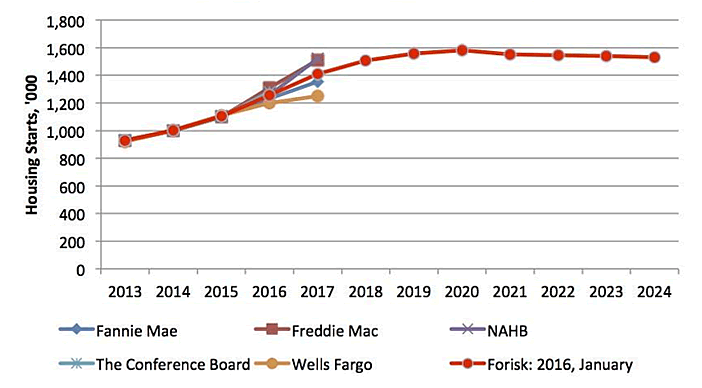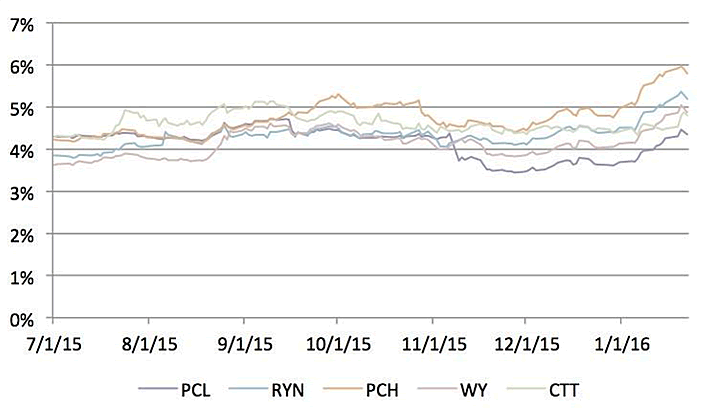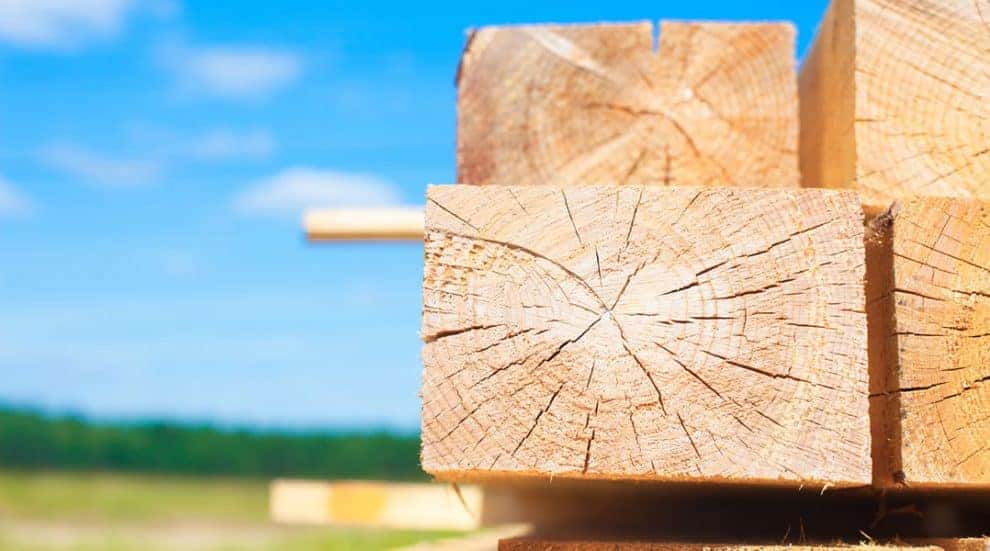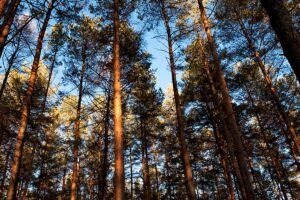At the end of the day, U.S. housing markets drive earnings for U.S. timber firms. While Chinese demand and Canadian exchange rates and global oil prices affect forest industry costs and margins, the U.S. timber ship floats on the sea of builders and consumers that buy and sell homes made with wood products. In 2014, total U.S. housing starts increased 8.0% over 2013. To close 2015, Forisk projected growth of 12.1% over 2014 versus actual growth of 10.3%, a variance of 18,000 starts. How do things look for 2016? And what’s happening with timber firms?
U.S. Housing Markets
Forisk’s Housing Starts Outlook combines independent forecasts from professionals in the housing industry. Currently, these include Fannie Mae, Freddie Mac, the National Association of Home Builders (NAHB), The Conference Board, and Wells Fargo. Overall, Forisk projects 2016 housing starts of 1.26 million, up 13.7% from 2015.
Forisk Research Quarterly (FRQ) Q1 2016 U.S. Housing Starts Outlook, Base Case

Forisk’s 2016 Base Case peaks at 1.58 million housing starts in 2020 before returning to a long-term trend approaching 1.52 million. For comparison, our October 2015 Base Case peaked at 1.56 million housing starts in 2019.
Timber REITs
Timberland-owning REITs dropped nearly 15% through the first three weeks of 2016 per the Forisk Timber REIT (FTR) Index, while the S&P lost 6.7%. In the case of timber REITs, all five firms remain subject to strong investor interest thanks to the November 2015 announced Plum Creek-Weyerhaeuser merger. This timber marriage spotlights returns and yields across all timberland investment vehicles.
Timberland investors often use timber REIT dividend yields and U.S. Treasuries as proxies or reference points for discount rates applied to valuation models. In the case of Treasuries, 2016 opened with the 10-Year and 30-Year at 2.24% and 2.98%. How do timber REIT dividend yields compare to private timberland discount rates of 5.0 to 6.5%? Each public timber REIT pays quarterly cash dividends. On an annualized per-share basis, these total:
- CatchMark (CTT): $0.50
- Plum Creek (PCL): $1.76
- Potlatch (PCL): $1.50
- Rayonier (RYN): $1.00
- Weyerhaeuser (WY): $1.24
The figure below plots dividend yields (annualized dividends divided by closing share price) over the last six months of 2015 through January 22nd, 2016.
Timber REIT Dividend Yields, 7/1/15-1/22/16

Current timber REIT yields now “approach” discount rates commonly applied to recent timberland transactions. While timber REIT yields averaged 4.34% at the close of 2015, the recent declines in equity prices pushed average yields up to 5.13% on January 20th (with Potlatch nearly high-fiving 6%) and closed at 5.00% on January 22nd.
This content may not be used or reproduced in any manner whatsoever, in part or in whole, without written permission of LANDTHINK. Use of this content without permission is a violation of federal copyright law. The articles, posts, comments, opinions and information provided by LANDTHINK are for informational and research purposes only and DOES NOT substitute or coincide with the advice of an attorney, accountant, real estate broker or any other licensed real estate professional. LANDTHINK strongly advises visitors and readers to seek their own professional guidance and advice related to buying, investing in or selling real estate.










Add Comment